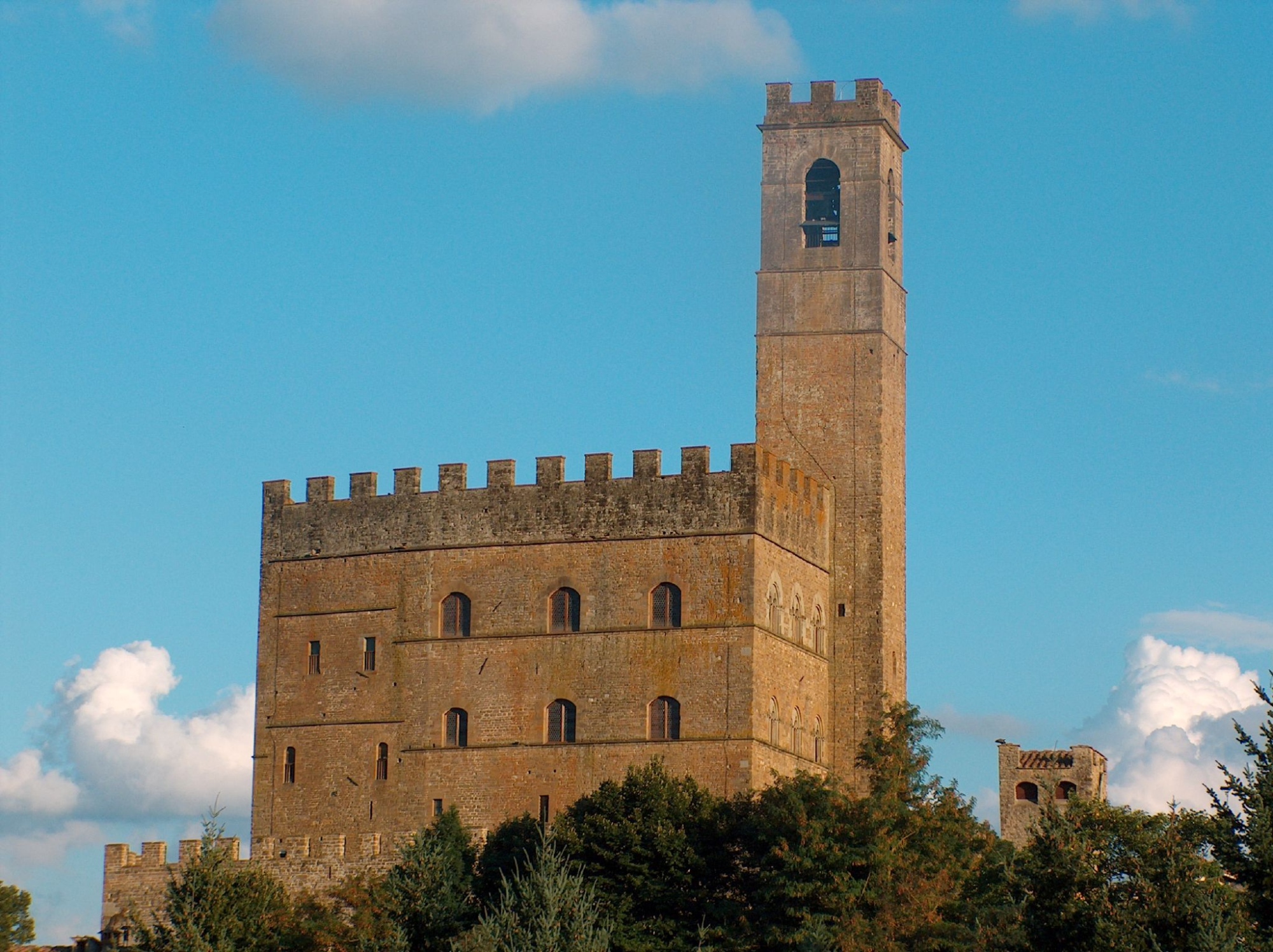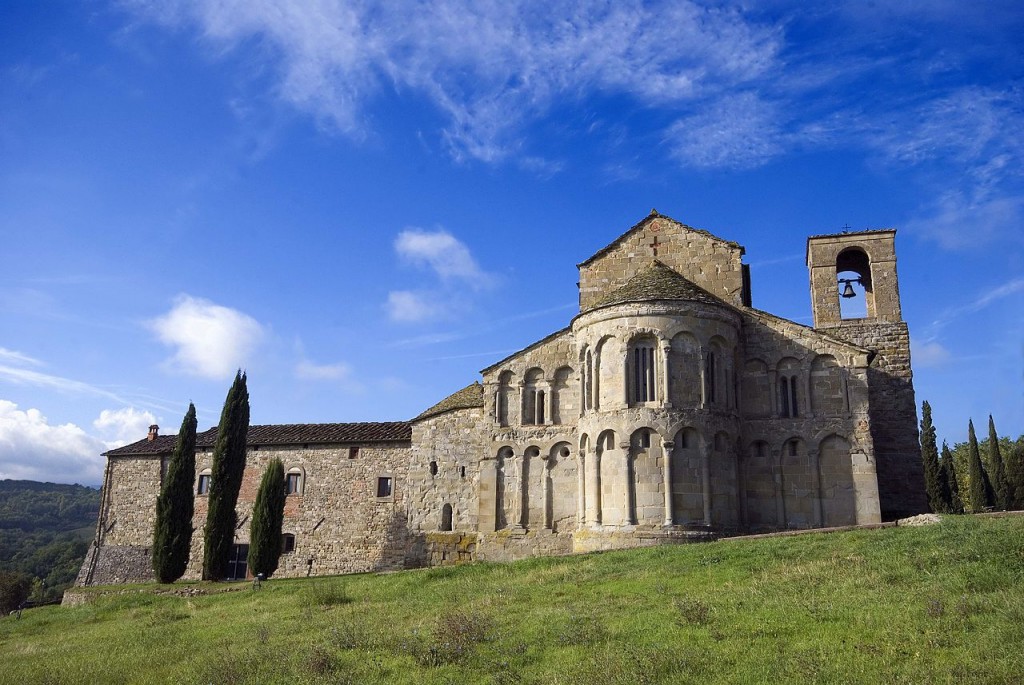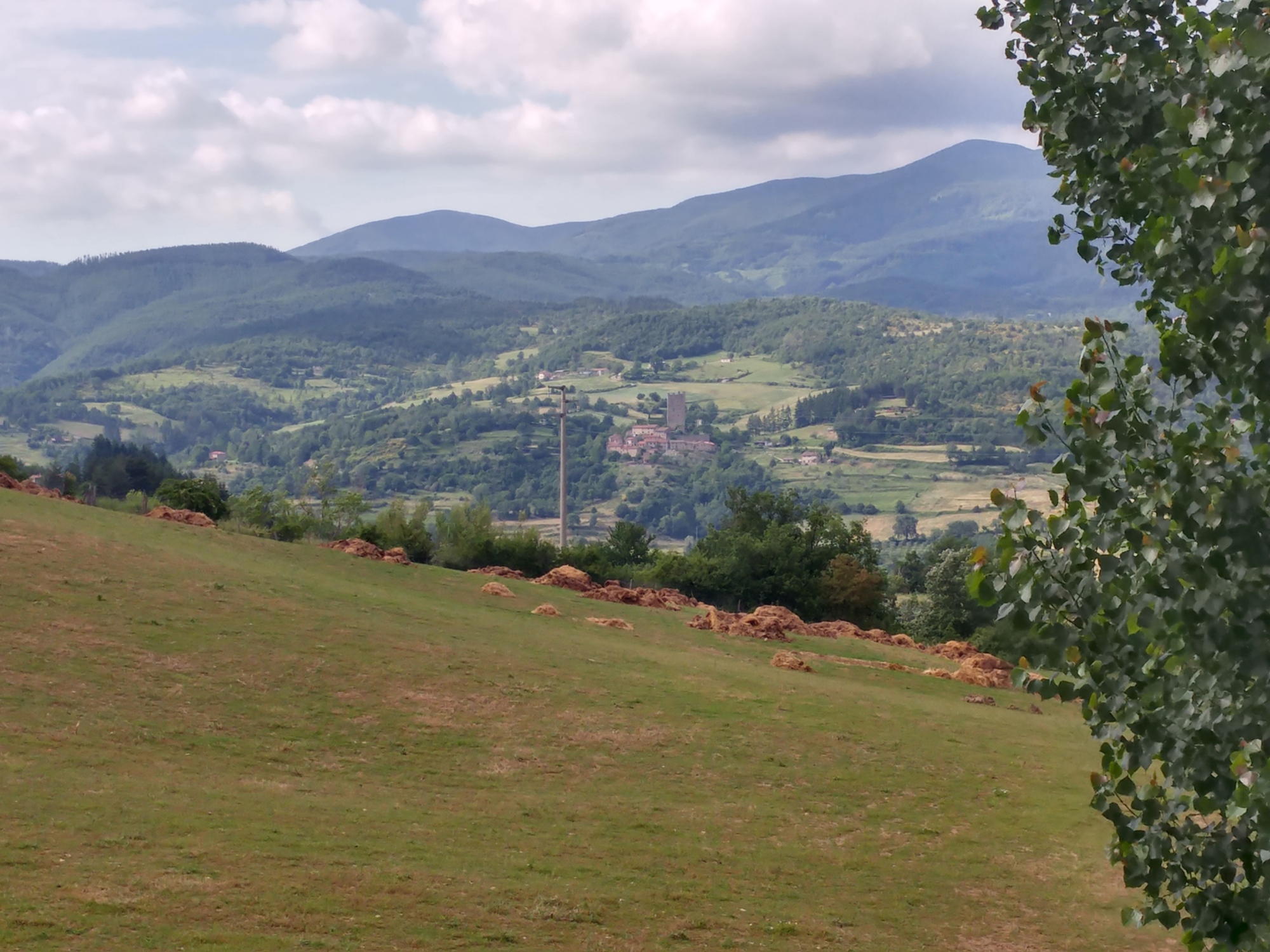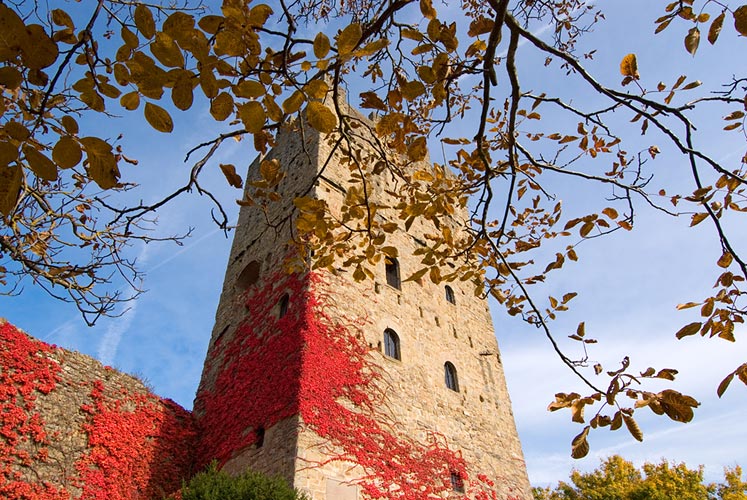
Hop in your car and explore hamlets, castles and churches in the Casentino
Castles and fortified hamlets, thousand-year-old churches, abbeys and monasteries all carry traces of a medieval world that still fascinates us today. This is the Casentino, a valley crossed north to south by the Arno river, enclosed to the west by the Pratomagno mountains and to the east by the Alpe di Catenaia and the La Verna mountains, which separates the area from the Valtiberina.
Beginning in Arezzo, this itinerary guides you along historic routes that were once travelled by pilgrims, knights and illustrious figures. Along the way, we'll visit some of the area's top attractions, including the Conti Guidi castle in Poppi, the Romena Castle in Pratovecchio and the Castle of Porciano.

Head north from Arezzo along Regional Road SR71 until you reach the small town of Rassina. Just a few kilometres from here, you can visit the Church of Sant'Antonio in Socana, an extraordinary example of worship through the ages: first used the Etruscans (there is a large sacrificial altar in the apse, part of the Etruscan temple that dates to the 5th century BCE), the Romans then chose it as a site of worship, followed, finally, by the Christians.
Back on Regional Road SR71, continue to Bibbiena. Right before the town, take a left at the roundabout onto Regional Road SR70, also known as Strada della Consuma, which will take you to Poppi.
As you near Poppi, you'll see the medieval castle that belonged to the Guidi counts from a distance. Built in the 13th century, the castle's design is attributed to Lapo and Arnolfo di Cambio, with later changes in the 15th century by the local architect Jacopo Turriani. The large building is a gem of civic and military architecture, excellent evidence of the wealth that the Guidi counts acquired over the years. Now that you're here, make sure to stop by the counts' chapel at the castle, which boasts frescoes painted in the first half of the 14th century by Taddeo Gaddi, one of Giotto's most faithful followers.
The historic centre of Poppi is also worth a visit. Take a stroll along the main street via Cavour, lined with porches, and pay a visit to the religious buildings standing at both ends of the street: the Oratory of the Madonna del Morbo, an elegant example of Baroque architecture (17th century), and the Vallombrosan Abbey of San Fedele (late 12th century).

Back on the road, continue along the SR70 until the Campaldino crossroads, then take the Bidente State Road SS310 in the direction of Pratovecchio.
The heart of the historical town of Pratovecchio is piazza Paolo Uccello, dedicated to the great Renaissance artist who was born here in 1397. The religious buildings are remarkable, including the Camaldolese monastery founded by the Guidi Counts in the 12th century and the Dominican monastery of Santa Maria della Neve (16th century), with its nearby Propositura church, home to 17th-century paintings.
A hillside road leaving from Pratovecchio leads to the Romena Castle, an impressive fortress (also built by the Guidi Counts) that dominates the entire valley from 600 metres above. From the castle, a narrow road will take you directly to one of the most impressive Romanesque buildings in the entire Casentino: the Parish Church of San Pietro in Romena. Dating to the 12th century, the building has been renovated many times, boasting a simple facade and bell tower. The interior, divided into three aisles, features monolithic sandstone columns with capitals elaborately carved with stylized leaves and figures, rich in symbolism and at times mysterious.


Hop back in the car for another short drive to the town of Stia. The bridge over the River Staggia leads to the historic town centre, built around via Tanucci. The main square, piazza Tanucci, is surrounded by porches, the ruins of medieval buildings and the Romanesque parish church dedicated to Santa Maria Assunta. The building dates to the 12th century and features three aisles separated by columns topped with capitals carved with human and animal motifs. The church also houses several stunning frescoes, paintings and other artworks, like a relief attributed to the workshop of Andrea della Robbia. Another must see in town is the Wool Museum in Stia, set in a former wool mill complex along the Staggia River.
The final stop on our journey is only a few kilometres away from Stia. Take the hillside road via Dante Alighieri to reach the 11th-century Castle of Porciano, one of the first residences of the Guidi Counts (them again!), surrounded by the small hamlet of Porciano. All that remains of the castle are part of the walls and its massive tower, now home to a museum (part of the Ecomuseums of the Casentino network), which showcases objects of everyday use in the area's rural and pastoral tradition, medieval crockery and a small collection of American Indian crafts from North America.